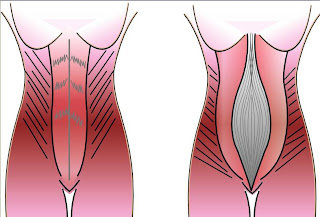Yesterday, I went to an amazing lecture at the Chautauqua Institute -check out and support their series,
http://www.ciweb.org/education-lectures-week-one/#Tuesday. The speaker was one of NASA's Astrophysicist's for the Kepler Mission, Natalie Batalha. Their quest (in simple terms) is to understand the greater universe / cosmos and, in doing so, advance us closer to finding sustainable planets for life outside earth. One imperative compound in supporting life outside earth, water.
There were many fascinating and interesting components to this lecture, and Batalha spoke in terms anyone could understand. On our drive home, my husband (Ben) and I discussed some of our "ah-ha" (spelling?) moments we experienced during our science studies (organic chemistry namely). Both of ours relate to the beauty and wonder of life, all surrounding water.
First, I want to disclose that my background in the sciences is post-baccalaureate and, soon, Masters. **However** Ben's makes my background pale and humble. Two degrees from MIT in, one, Biology with a focus in Biomedical Engineering and, two, Chemistry. As well as a Masters from MIT in Chemistry -at which he graduated in the top 10% and contributed to Noble Prize cancer research. Easy, right?! Nope...So yeah, he takes "the cake" on this one.
Now that this is disclosed, back to my original topic...Life and water...
My ah-ha moment? Learning all of life is an artistic make-up of carbon, hydrogen, oxygen and nitrogen, abbreviated CHON. This beautiful world around us, the babies I have cried with joy when holding, my loved ones I wept for when their spirits passed, are all different combinations, or paint strokes of these simple elements (it is nothing short of a miracle). Ben's ah-ha moment? In my terms or "Annie Terms", you can build molecules and bacteria, how empowering for our species, and they can metabolize with the simple elements above, CHON. But the most important need for metabolizing anything in mammals? H2O, water.
I share this with you because, lately, I am on a tangent about water -on my blog, with my clients and at home. My diaper bag, admittedly weighs 10-15 pounds (at least) because I am constantly carrying around water bottles and strongly encouraging my children to drink water.
But here is the bottom line:
You cannot metabolize nutrients properly (yielding mal-nutrition) and metabolize fats properly (yielding obesity) IF you are dehydrated. Dehydration is a disease and therefore, an epidemic in this country. The solution to dehydration is to limit sugar (which acts as a diuretic) and caffeine. Gesh, as a mother I would never write eliminate caffeine. But limit? Sure!
So:
Want to help your body maintain a healthy weight? Drink water.
Want to feel better, look better (skin glow)? Drink water.
Want to metabolize nutrients that support life (especially if you are nursing, pregnant or considering pregnancy)? Drink water
And please, avoid un-regulated nutrition programs that include excessive amounts of diuretics. They will impede your metabolism and in the long term, cause you to **gain** excessive amounts of weight, as well as, shift your thyroid and adrenals for the worse. As a personal trainer, I have witnessed this more than I like, and recovery from diuretics it is often an arduous, difficult road.
Back to water! The metric I use at Bella Bellies is simple:
Take your body weight and divide it in half. I rarely, if ever, use body weight as a reference for clients goals, but here it is useful.
Take your weight daily and divide it in half and drink that amount in ounces. Every day your weight will fluctuate especially if you are pregnant and nursing, other conditions which may affect it? Muscle weight gain (muscle weighs more than fat), constipation (can add at least 1-2 pounds), fluid retention prior to menstruation, and more, affect your need for hydration, making it not a static number. If you are dehydrated, you will lose weight, and drinking too much water will make you ill and stress your renal system.
So here I lay it all on the line.
My weight this morning (before I nursed) was 120 lbs. This is 2-5 pounds of what it usually is because I am **just** about to menstruate. Therefore I divide my weight in half and need to drink 60 ounces of water throughout the day.
Alas, this is my blog for the day. Please excuse any typos, my little one just woke from his nap and I do not have time to proof read.




